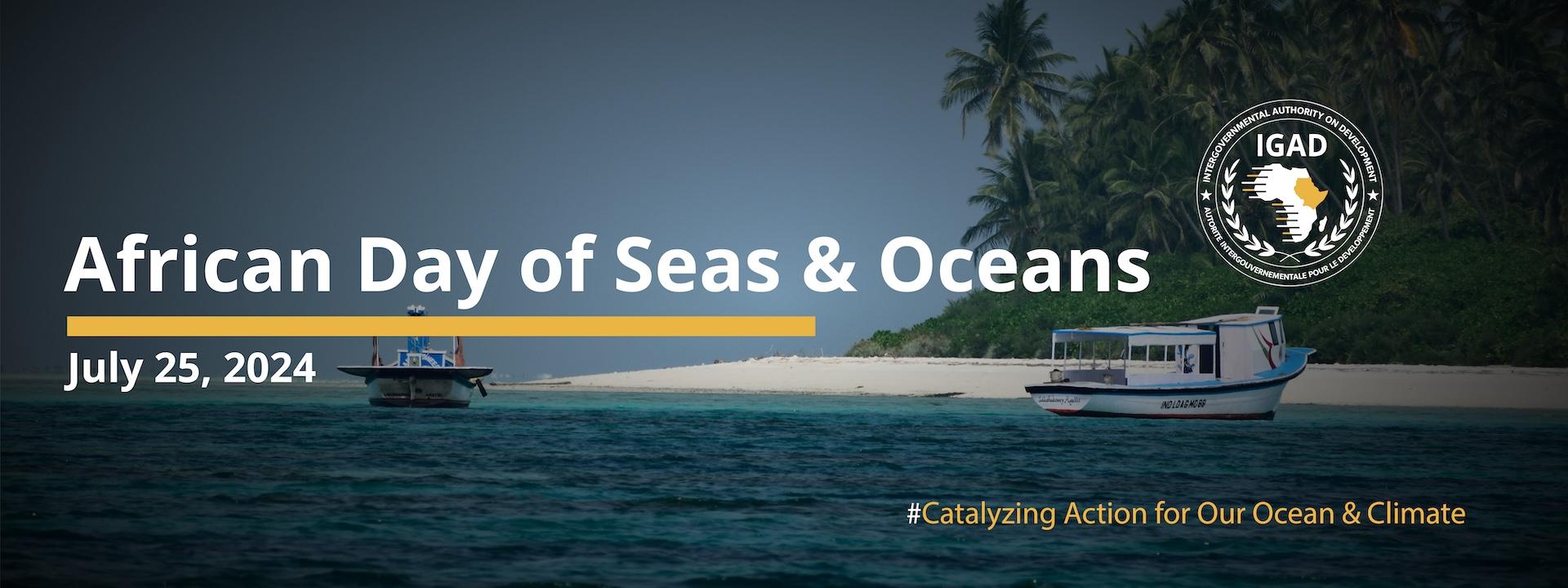Background
The Government of Sweden (SIDA), supported the implementation of some components of the IGAD Blue Economy Strategy, through the project entitled “Enhancing Blue Economy in the IGAD Member States for Biodiversity Conservation and Livelihoods Diversification” that promotes the Kunming-Montreal Global Biodiversity Framework to establish and effectively manage more MPAs in the IGAD region.
Kunming-Montreal Global Biodiversity Framework (KM-GBF) vision is to halt and reverse global biodiversity loss by 2030. The plan was headlined by the science-based target to protect or conserve at least 30 percent of the planet’s land and ocean by 2030.
IGAD organised capacity building workshop to build and update the capacities of policy officers to expand the designation of more MPAs and improve the management of the already designated MPAs in the IGAD region to meet 30% designation of MPA by 2030. This article provides an overview, challenges, opportunities and at last provided recommendations for interventions.
Marine Protected Areas (MPAs) have been established throughout the world for a variety of purposes such as conservation, tourism and education. MPAs have been established due to the threats faced by the habitat and marine life living within, including overfishing, pollution, and climate change. MPAs can have many different names and exist in all types of freshwater and ocean habitats, but the main focus is nearly always to protect the habitats and variety of life—biodiversity—they support. MPAs can have many different names, including marine parks, marine conservation zones, marine reserves, marine sanctuaries, and no-take zones. More than 5,000 MPAs have been established around the world. Together, they cover a little more than 8 percent of the ocean as of 2023.
Marine protected areas can be established in a variety of aquatic habitats. Some MPAs are in the open ocean. Many MPAs protect coastlines. Others cover estuaries, places where rivers enter the sea. In estuaries, freshwater and saltwater mix. Some freshwater habitats, including protected areas in the Great Lakes, are also considered MPAs. Different MPAs have different goals. The main focus of many MPAs is to protect marine habitats and the variety of life that they support. Some MPAs focus on conserving historic sites such as shipwrecks. Other MPAs are established in order to ensure that resources are sustainable—that they will not run out. By having limits that prevent overfishing, these MPAs ensure that fish can reproduce and maintain healthy populations. This enables people to fish year after year, maintaining their way of life.
Importance
Marine Protected Areas are important because they provide a range of benefits for fisheries, local economies and the marine environment including:
- Conservation of biodiversity and ecosystems.
- Arresting and possibly reversing the global and local decline in fish populations and productivity by protecting critical breeding, nursery and feeding habits.
- Raising the profile of an area for marine tourism and broadening local economic options.
- Providing opportunities for education, training, heritage and culture.
- Providing broad benefits as sites for reference in long term research.
Opportunities
The opportunities for conservation and management of marine biodiversity include:
- Compelling agenda on Biodiversity conservation
- Political good will and good governance
- Huge blue economy resources: EEZ, coastlines, mangroves, seagrass beds, etc.
- Institutional framework in the region
- Huge market for Marine products- Population
- Peace and tranquillity in the region for the advancement of the MPA agenda.
Challenges
The key challenges in the MPA management in the IGAD region include:
- Limited MPAs institutional capacity and weak governance
- Inadequate data and information sharing
- Resource constraints/ Low investment in BE
- Encroachment of MPAs and development infrastructure- Marine cables
- Limited legislation and enforcement- policy incoherence & national domestication for transboundary resources.
- Ineffective community engagement and benefit sharing
- Conflict over the use of the marine space and new potential large-scale developments in the coastal zone threaten biodiversity and ecosystem services.
- Maritime insecurity – inadequate enforcement and improvement of existing regulations – Pirates.
- Coral reefs and mangroves are deteriorating from the combined impacts of local use and global threats such as climate change.
- Fish stocks &management capacity are declining due to overfishing and IUU.
- Vulnerable and threatened species and habitats are being impacted by fishing and derelict fishing gear.
- Low economic return – Low investment on Blue Economy.
- Climate change – shore erosion, ocean acidification, sea surface temperature increase.
- Pollution and plastic waste disposal.
Recommendations
Based on the above opportunities and challenges, key recommendations were made for both national and regional consideration.
National level:
- Enhance local community engagement/ employment for Project sustainability
- Promote integrated Marine Spatial Planning
- Enhance capacity and promote joint Monitoring, Control and Surveillance (MCS)
- Mainstreaming financial mechanism of Resource mobilisation
- Promote value addition and market access of blue economy resources (Tourism, fish, etc.)
Regional level:
- Integration of regional policies on biodiversity conservation on shared resources.
- Establishment of a regional platform for data and information sharing on biodiversity conservation.
- Promote collaboration and partnership in research for evidence-based policy making.
- Deliberate regional meetings for discussion on biodiversity.
- Promote value addition and market access of blue economy resources (Tourism, fish, etc.).
- Establishment of A regional Center of Excellence on marine and inland biodiversity conservation.

